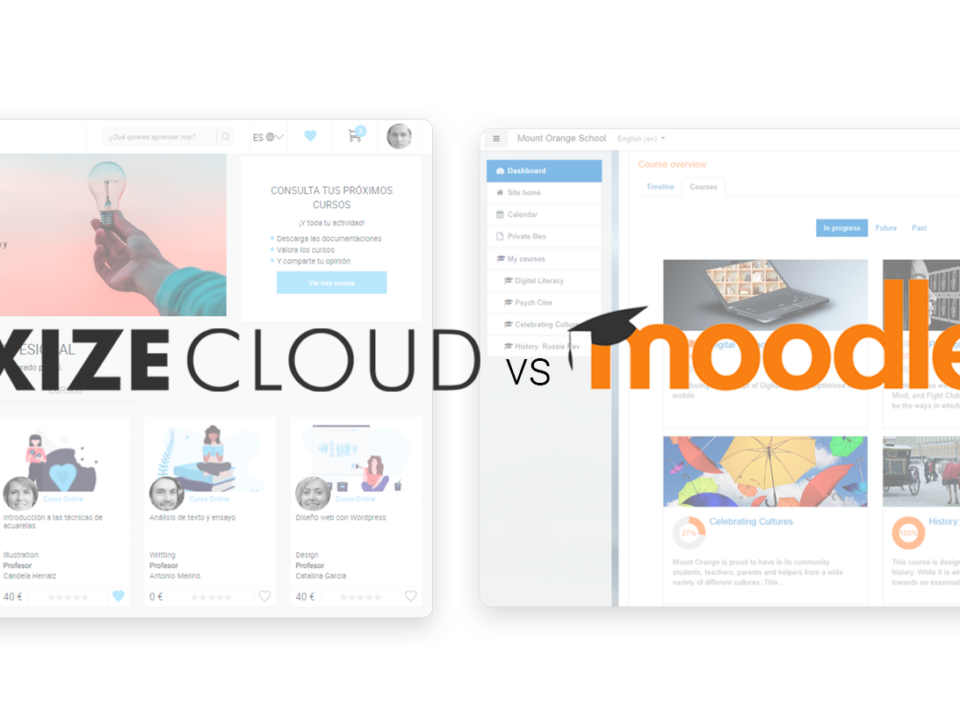Diagnostic tests are a great tool to find out what your users' level of knowledge is regarding a topic, and to be able to automatically recommend courses to help them develop the knowledge they need to reinforce.
In addition, the diagnostic tests allow your users to compare their level with the level of their sector and peer skills. As your database grows, it can become a line of business to diagnose other companies and advise them with training.
In this article we want to share with you a series of tips to define your diagnostic tests.
Shall we start?
1. Test home page
It serves to welcome the test, provide guidance on the duration and estimated time, and motivate the participant to finish.
2. Categories
The tests can be divided into different parts, called "Categories". This is transferred to the final report, where the grade will be broken down by each of the categories.
When defining the categories, it is recommended that each category be linked to a theme of your online school. This way and depending on the grade in each category, the platform will automatically recommend courses on those topics that the user has gotten the worst grade on.
Keep in mind when creating your tests, that they cannot have more than 10 categories.
3. Questions
We recommend that you ask short and concise questions. Also, to add variety, you can ask the questions in different ways:
- Direct questions
- Statement and answer indicating the degree of conformity
- Complete sentences
- etc
4. Levels
For there to be variety in the type of questions, we recommend distributing them according to 3 levels (basic, intermediate, advanced). This will help you decide what kind of value you can give each question and how it will affect the final score.
- Basic: basic level questions correspond to concepts that with general knowledge could be answered.
- Intermediate: these are questions more focused on the subject that the category evaluates.
- Advanced: these are questions that require knowledge of tools or methodologies to answer.
5. Answers
We recommend creating between 4 and 6 answers per question. Like the questions, the more concise are the answers, the better. In addition, adding a touch of humor or using everyday expressions will help break the monotony of the Test.
To write the answers, we recommend that you put yourself in the shoes of different user profiles. We divide them into skeptical, mistaken, conscious, initiated and advanced.
- The skeptic: Answers that show total ignorance and lack of interest in the subject.
- The wrong one: They are answers that denote security in something but that it is wrong.
- The person aware of the topic but has not applied it: Answers that show minimal knowledge, but recognizing that it is very vague.
- The initiate: They show a certain degree of knowledge on the subject.
- The advanced: They show advanced knowledge on the subject.
In tests, each answer has a value, which will add or subtract for the final score. Depending on the value of the answer, you can put one score or another:
- Maximum score: it is the exact answer to the question and will depend on the level of the question.
- Average score: They are answers that by nuance could be correct, but it is not the exact answer. They will also depend on the level of the question.
- Score 0: Answers that are not correct or neutral.
- Negative score: Answers that are not correct, and you want to penalize this answer. They will also depend on the level of the question.
As a final note, it is important to review what maximum score each category has, to ensure that all categories have the same score. In the event that the maximum score does not coincide in all categories, it means that there are categories that carry more weight than others.
As you have seen, tests have a lot of potential to get to know your target audience better and offer them what they need. Are you ready to create your diagnostic tests for your online school? Try a free month of Foxize Cloud and start your new line of business with training. Without obligation!


